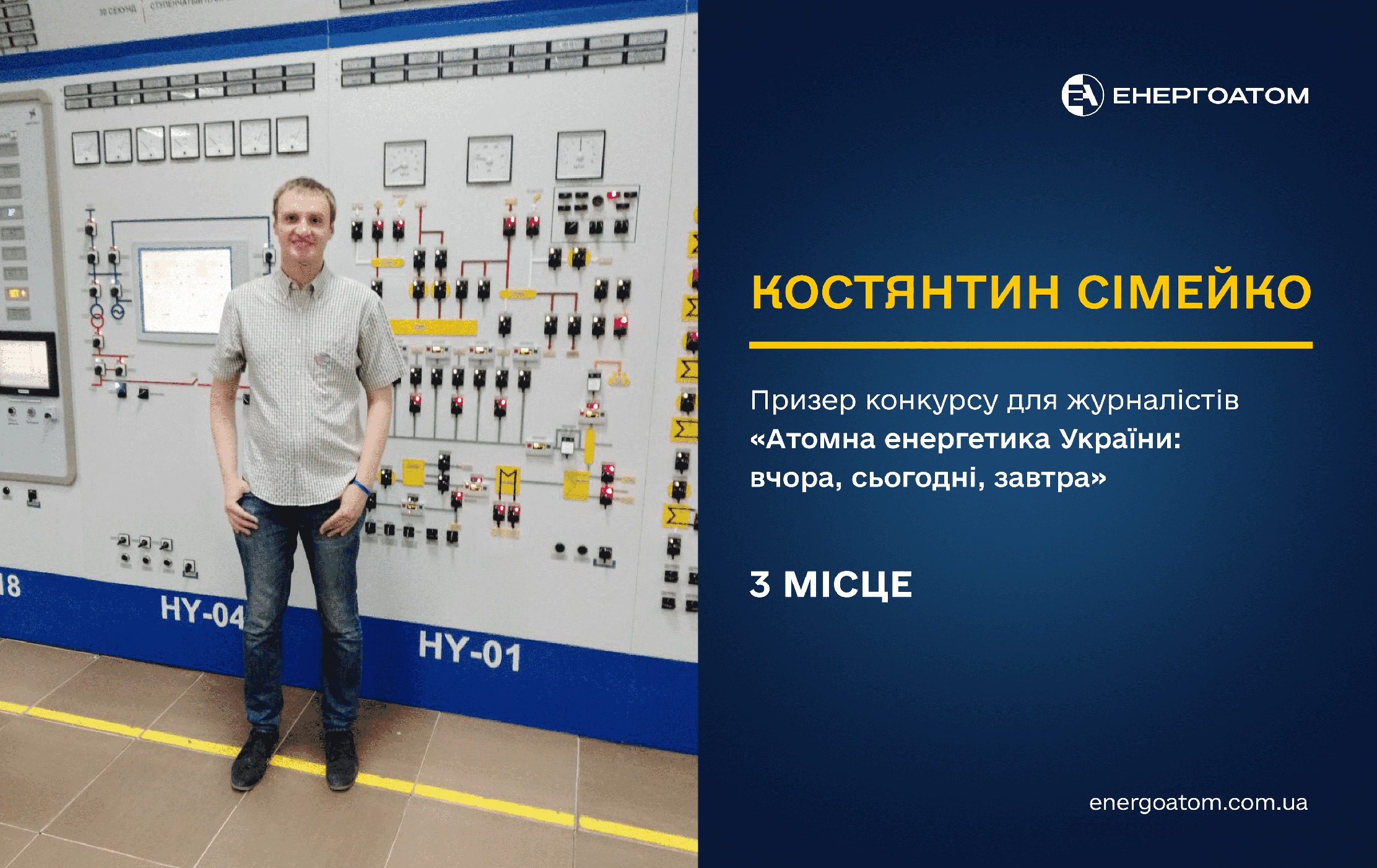KOSTIANTYN SIMEYKO Winner of the Contest for Journalists "Nuclear energy of Ukraine: yesterday, today, tomorrow" 3rd PLACE

Kostiantyn Simeyko
Doctor of Technical Sciences, Senior Researcher, Scientific Secretary and Head of the Laboratory of the Institute of Safety Problems of Nuclear Power Plants of the National Academy of Sciences of Ukraine
Modern energy and climate challenges place a critical question for the whole world, which could be briefly formulated as follows: “How to create such an energy system that would be both low-carbon and resistant to all kinds of threats?” At first glance, the question seems simple, but if you dig deeper, you will have to find an answer to that. Nevertheless, looking ahead, this answer is inextricably linked to nuclear energy.
Sustainable energy system
Energy systems could be considered sustainable if the following three conditions are met: 1) there are operating power generating facilities; 2) stable operation of the entire energy system is ensured; 3) obtaining a stable economic benefit is established, i.e., it is possible to forecast the costs of electricity production and forecast its price. In recent decades, another condition has been added – the fourth one: power facilities must be climate neutral if we want to preserve the climate and our earth for future generations.
If you think about these conditions, in the 21st century, nuclear power is almost the only one that meets all four criteria – not only due to its technological and design features (defense-in-depth, safety system backup, diversification and independence of safety-related systems, etc.), but and thanks to organizational aspects such as ensuring emergency preparedness, continuous improvement of safety culture and effective international cooperation.
Nuclear energy turnaround
That is why the governments of many countries have again turned to nuclear energy as a reliable, efficient and low-carbon generation. One by one, the countries of the EU, Asia, America, and the Middle East has begun to declare their intentions to deploy programs for the construction of new nuclear power plants. About 100 new nuclear power reactors with a total capacity of about 100,000 MW have already been ordered, and more than 300 more are planned in the world. About 30 countries are considering, planning or already starting nuclear power programs.
The result of such activity was not long in coming: in 2023-2024 alone, 9 new reactors were put into operation in the world, and 10 were started to be built. Moreover, most importantly, the number of new reactors exceeded the number of decommissioned power units. There is already every reason to believe that the growth in the coming years will be precisely on the side of increasing the installed capacities of nuclear power plants.
Nuclear future of Ukraine
Ukraine has not become an exception in the global nuclear trend. The share of nuclear energy has grown rapidly since independence of our country and in recent years has accounted for more than 50% of total energy production. Nuclear power plants not only generated and continue to generate the cheapest electricity in the country, but also create tens of thousands of jobs and form about 4% of the national GDP.
With the beginning of the war, the main problem was the destruction of power facilities by the enemy, in particular maneuvering ones, which significantly affected the possibility of effective regulation of the energy system and, as a result, the reliability of electricity supplies for end consumers. It is clear that under these conditions, ensuring the country's energy security has become issue number one.
Currently, the updated energy strategy of Ukraine until 2050 has been adopted. For reasons of safety and security in the conditions of martial law, it is not yet public, however, certain information is known to the public. In particular, the development of nuclear energy as a reliable and safe, low-carbon energy source is provided through the construction of new high capacity power units, as well as small modular reactors. Moreover, preparatory work are already underway for this. New power units will replace destroyed, damaged or outdated units of TPPs/HPSs, and over time NPP units that will exhaust their lifetime and be decommissioned.
Now Ukraine, even in the difficult conditions of the war, is taking decisive steps towards the implementation of this strategy. Completion of power units 3 and 4 at the Khmelnytsky NPP is planned, the project for the construction of new power units using Westinghouse AP1000 technology is being implemented, and the implementation of projects for the introduction of small modular reactor technologies is underway.
For Ukraine, this is a unique chance to restore its energy system according to the principles of reliability, sustainability and environmental compatibility, as well as to become one with the leading energy countries of the world, having its own fleet of new safe and high-tech nuclear power units, which will ultimately benefit generations hundreds years ahead.
